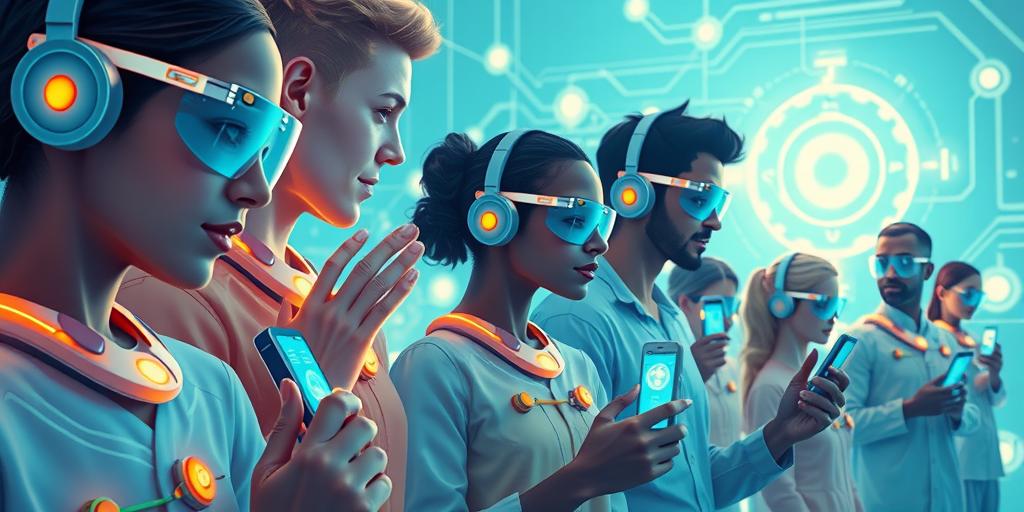Forget the smart fridge that tells you when you’re out of milk – the Internet of Things (IoT) is about to revolutionize healthcare as we know it. Prepare to be amazed by its life-saving potential! We’re diving deep into the incredible ways IoT is transforming medicine, moving beyond everyday conveniences to genuine life-saving applications. From remote patient monitoring to cutting-edge medical devices, the future of healthcare is here and it’s connected.
Revolutionizing Remote Patient Monitoring
Remote patient monitoring (RPM) is one of the most exciting applications of IoT in healthcare. Imagine a world where chronic conditions like heart failure or diabetes are managed effectively without constant trips to the doctor’s office. This is the reality IoT is creating. Wearable sensors, connected medical devices, and sophisticated software provide continuous health data, allowing for proactive intervention and improved patient outcomes. This real-time data stream empowers healthcare providers to spot potential problems early, preventing hospitalizations and improving quality of life. Think of the cost savings alone – fewer ER visits and hospital stays translate to substantial economic benefits for both patients and the healthcare system. Moreover, for patients living in remote areas with limited access to healthcare, RPM is truly a game-changer, bridging the gap and ensuring timely medical attention. The long-term implications for improving global health access are immense.
Wearable Sensors: Your Personal Health Guardian
Wearable sensors, such as smartwatches and fitness trackers, play a pivotal role in RPM. These devices monitor vital signs like heart rate, blood pressure, and even blood glucose levels. This data is transmitted wirelessly to a secure platform, accessible to both the patient and their healthcare provider. This allows for personalized care plans and quick interventions based on real-time health data. For example, if a patient’s heart rate suddenly spikes, an alert can be sent to their doctor, potentially preventing a serious medical emergency. The advancement in wearable sensor technology is making remote patient monitoring more accurate and accessible than ever before. Long-term data collection also provides valuable insights for personal health management and disease prevention.
Connected Medical Devices: Bridging the Gap in Healthcare
IoT isn’t just about wearables; it encompasses a wide range of connected medical devices. These devices, from insulin pumps to pacemakers, can transmit data wirelessly, providing doctors with valuable insights into a patient’s condition. This capability enables more precise adjustments to treatment plans, minimizing risks and maximizing effectiveness. Connected inhalers can track medication usage, helping to ensure patients are adhering to their prescribed regimen. Smart pill dispensers can send alerts when a dose is missed, promoting medication adherence and preventing potential health complications. The benefits of connected medical devices extend beyond individual patient care, offering valuable data for clinical research and improved healthcare policies.
Enhancing Precision Medicine and Diagnostics
Precision medicine, tailoring treatments to individual genetic and environmental factors, is another area where IoT is making a huge impact. By integrating data from various sources, including wearable sensors and genetic information, doctors can create highly personalized treatment plans. This approach drastically improves patient outcomes and reduces the risk of adverse reactions to medications. The use of AI and machine learning in analyzing this data further enhances the effectiveness of precision medicine. The ability to predict potential health problems and intervene proactively is transforming healthcare into a truly proactive and personalized system. This sophisticated integration of data points to the development of advanced diagnostic capabilities. Think of quicker disease detection, less invasive procedures, and an overall improved healthcare experience.
Smart Diagnostic Tools: Speed and Accuracy Redefined
IoT is revolutionizing diagnostic tools, making them faster, more accurate, and easier to use. Smart imaging devices, for example, can instantly transmit high-quality images to specialists for analysis, eliminating delays and improving diagnosis speed. This means faster treatment and better outcomes, especially in emergency situations. Furthermore, point-of-care diagnostics, utilizing IoT-connected devices, are making healthcare more accessible in remote settings. Imagine rapid diagnostics available at the patient’s bedside, eliminating the need to transport samples to centralized labs.
AI-Powered Diagnostics: The Future of Healthcare is Now
Integrating AI with IoT devices is transforming the way medical data is analyzed. AI algorithms can analyze large amounts of data from various sources, identifying patterns and providing doctors with valuable insights. This capability is significantly improving the accuracy of diagnoses and treatment plans, leading to fewer medical errors and enhanced patient care. The speed and efficiency of AI-powered diagnostic tools offer the potential to eliminate delays and improve overall healthcare delivery systems. The future of medical diagnostics lies in the seamless integration of IoT and AI.
Improving Hospital Efficiency and Safety
The integration of IoT within hospitals offers substantial improvements in efficiency and patient safety. Real-time tracking of medical equipment, for instance, helps prevent loss or theft, improves inventory management, and reduces unnecessary costs. Smart beds can monitor patient vital signs, sending alerts if a patient’s condition deteriorates. This enhances patient safety and allows medical staff to respond promptly. IoT is also transforming hospital logistics, streamlining workflows, and reducing wait times. The interconnected nature of IoT within hospital settings creates an efficient, and safer, healthcare environment. Furthermore, the collection of data from multiple sources allows for better resource allocation and optimization. This holistic approach improves overall hospital efficiency.
The Future of IoT in Healthcare
The potential of IoT in healthcare is vast and rapidly evolving. As technology continues to advance, we can expect to see even more innovative applications emerge. From personalized medicine to advanced surgical robots, the possibilities seem limitless. The convergence of IoT, AI, and other emerging technologies will undoubtedly transform the healthcare landscape, making it more efficient, effective, and accessible to all. The future of healthcare is connected, and it’s brighter than ever before. Embracing this technological leap is key to creating a healthier world for everyone.
Embrace the connected future of healthcare! Stay informed about the latest innovations and how they can improve your health and well-being.




